 |
 |
 |
| |
Comparison of two etravirine weighted genotypic scores with phenotypic susceptibility and virological response data
|
| |
| |
Reported by Jules Levin
7th European HIV Drug Resistance Workshop, Stockholm, Sweden March 25-27 2009
Lotke Tambuyzer,1 Johan Vingerhoets,1 Hilde Azijn,1 Annemie Hoogstoel,1 Steven Nijs,1 Gaston Picchio2
1Tibotec BVBA, Mechelen, Belgium; 2Tibotec Inc., Yardley, PA, USA
AUTHOR CONCLUSIONS
The TBT and MGR genotypic interpretation systems for ETR showed very good concordance in
- defining sensitivity or resistance to ETR
- association with virological outcome
Among the discordant samples, neither of the two genotypic interpretation systems was clearly associated with a particular virological outcome
The two weighted genotypic scores provided similar results when defining susceptibility to ETR in treatment-experienced patients
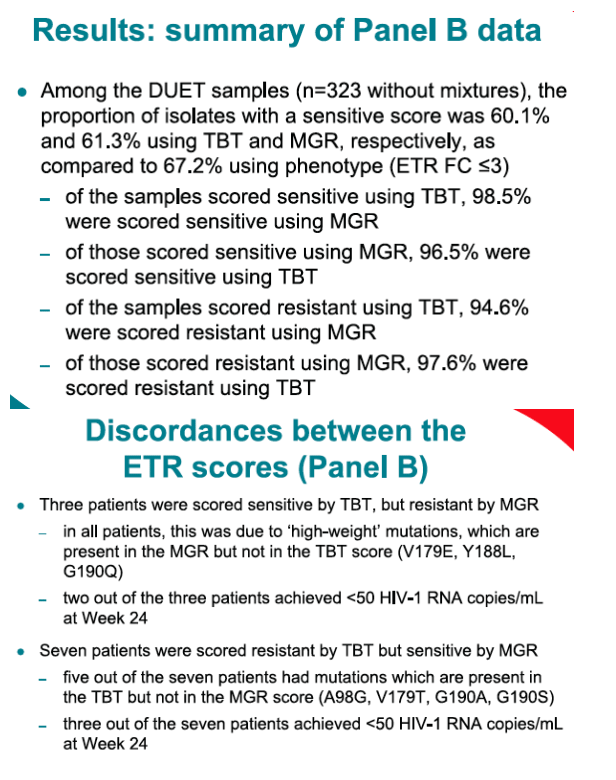
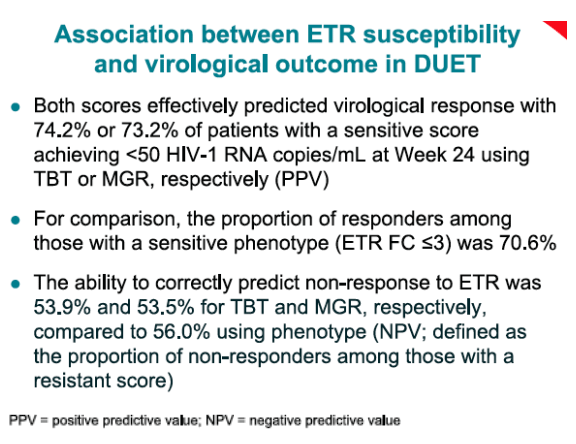
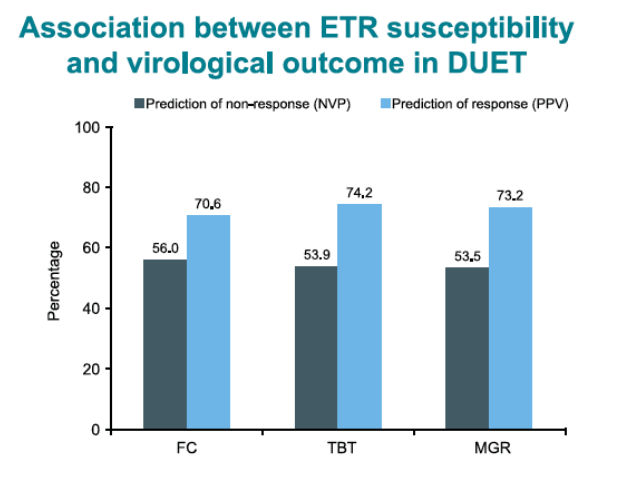
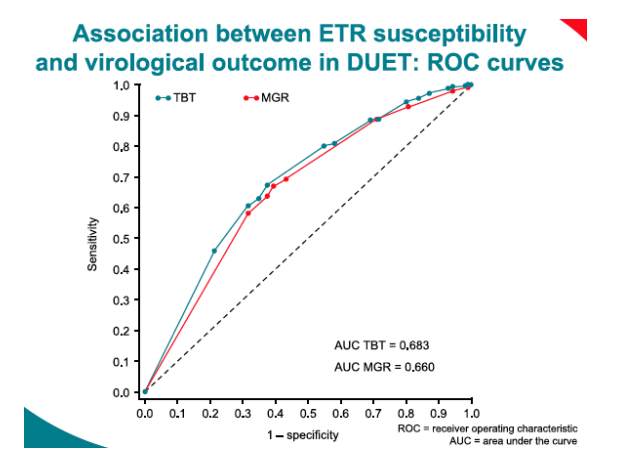
ABSTRACT
Background: Etravirine (ETR; TMC125) is a next-generation NNRTI with activity against NNRTI-resistant HIV-1 and proven in-vivo efficacy in treatment-experienced patients. Different genotypic interpretations of ETR resistance have been described recently and are based on clinical outcome datasets (DUET studies) and/or larger phenotypic/genotypic correlative databases. The use of individual weight factors, to reflect the differential impact of NNRTI resistance-associated mutations (RAMs), allows for the calculation of a weighted genotypic score to assess resistance to ETR. In this analysis, two different genotypic interpretation systems were compared: TBT (developed by Tibotec, including 17 ETR RAMs) and MGR (developed by Monogram, including 30 ETR RAMs).
Methods: Matched genotype and phenotype data (AntivirogramŽ) from an independent panel of NNRTIresistant HIV-1 recombinant clinical isolates (n=4,248) and from a subset of ETR-treated patients from the pooled DUET studies (patients who did not use enfuvirtide (ENF) de novo and excluding those who discontinued for non-virological reasons; n=403) were used. Analyses were performed on all samples or on subsets excluding mixtures. To facilitate the comparison, a single cut-off was used to categorise samples as resistant when the weighted genotypic scores were above two for TBT and above three for MGR.
Results: Overall, very good concordance was observed between the two genotypic scores. Among the 4,248 clinical isolates, 50.6% and 51.2% were scored sensitive using TBT and MGR, respectively. Accordingly, 58.8% had an ETR fold-change (FC) 23. Of the samples which were scored sensitive using TBT, 95.4% were scored sensitive using MGR (96.6% without mixtures). Of those scored sensitive using MGR, 94.3% were scored sensitive using TBT (95.8% without mixtures). Among samples without mixtures with a sensitive TBT score, but a resistant MGR score (n=59), 37%, 29% and 34% had an ETR FC 23, 3-13 and >13, respectively. Of those with a resistant score for both systems (n=1,361), 30% had an ETR FC 23. In the DUET dataset, concordant results
(scored sensitive or resistant using both systems) were observed for 95.5% of samples (96.9% without mixtures).
Both scores effectively predicted virological response with 74.2% or 73.2% of patients with a sensitive score achieving <50 HIV-1 RNA copies/mL using TBT or MGR, respectively. For comparison, the proportion of responders among those with a sensitive phenotype (ETR FC 23) was 70.6%. The ability to correctly predict non-response to ETR was 62.3% and 59.7% for TBT and MGR, respectively, compared to 48.7% using phenotype data.
Conclusions: The two genotypic interpretation systems used to assess ETR resistance showed very good concordance with each other and with the ETR phenotype. These two weighted genotypic scores can be effectively used to predict virological response to ETR in treatment-experienced patients.

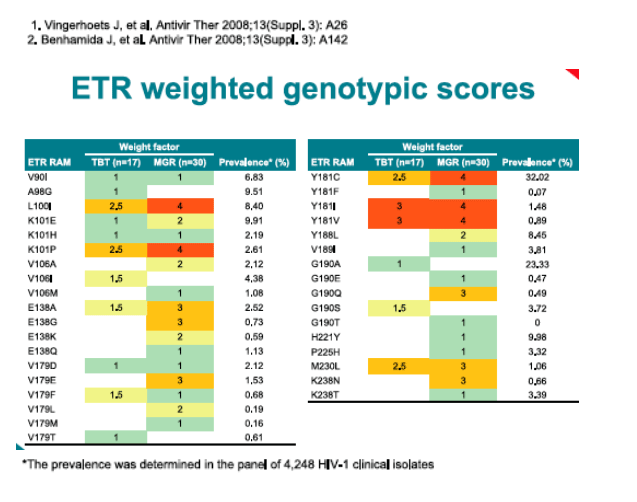
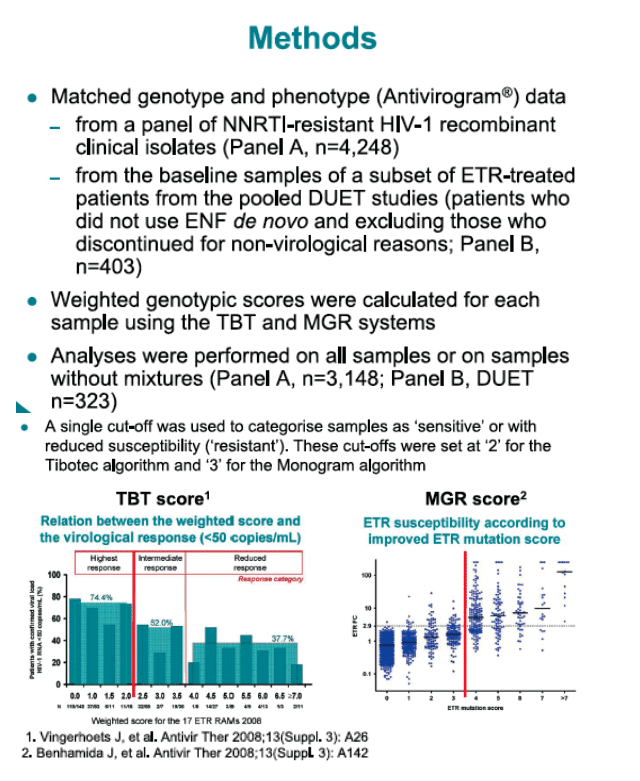
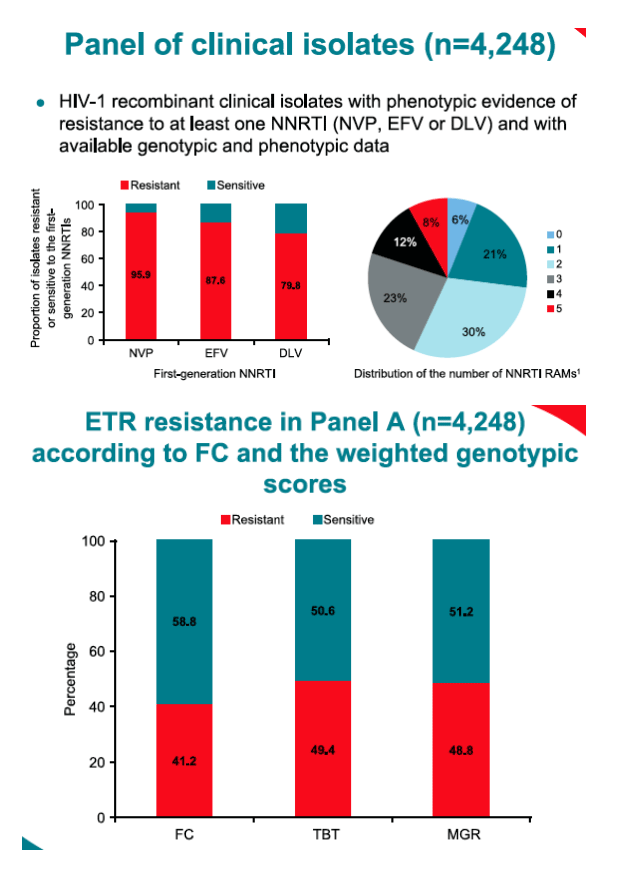
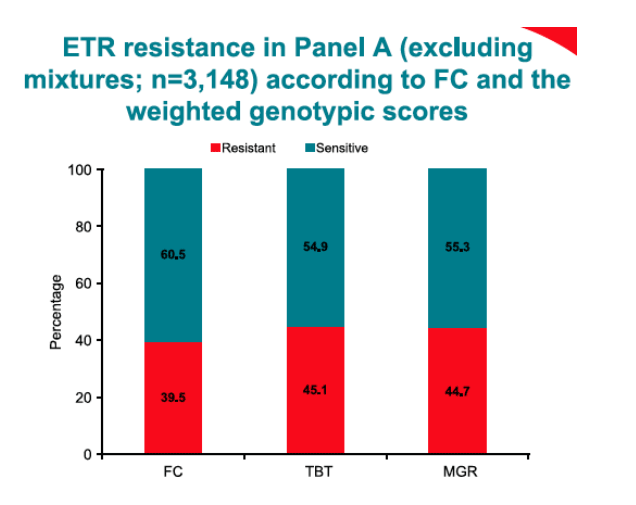
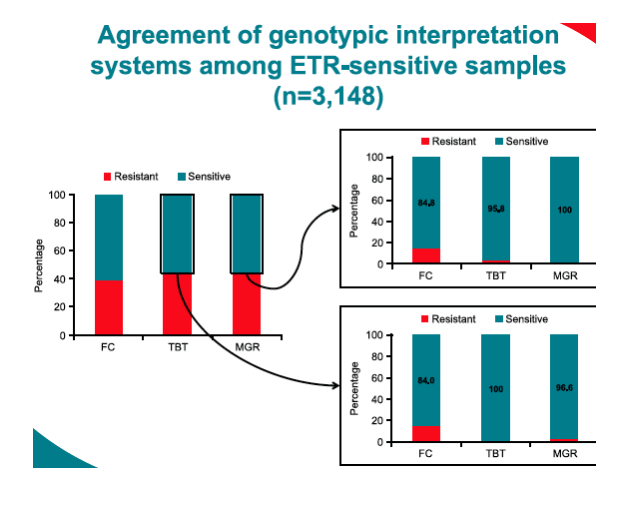
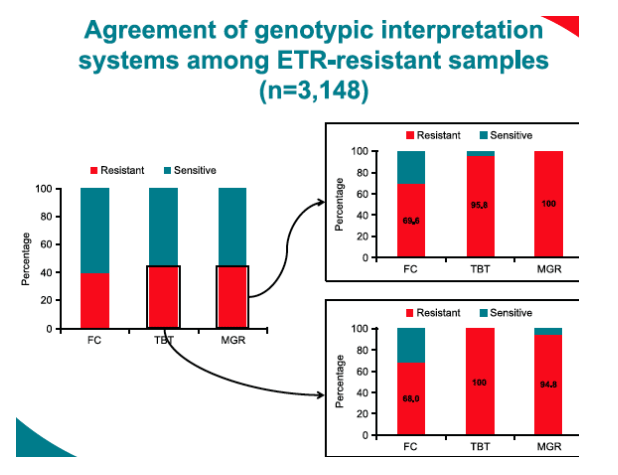
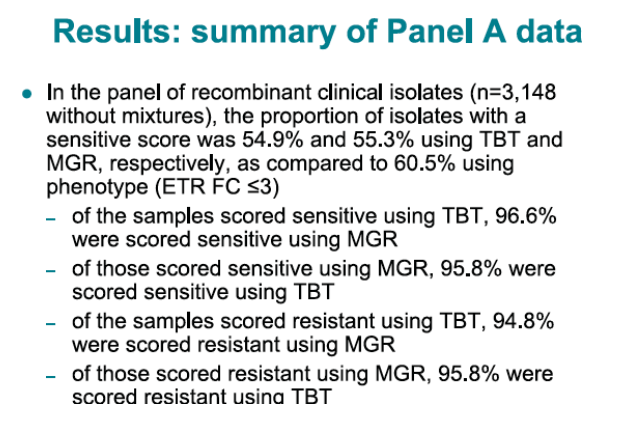

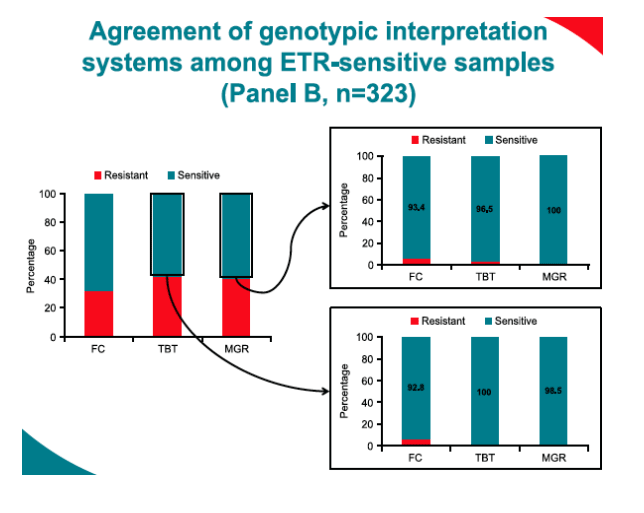

|
| |
|
 |
 |
|
|